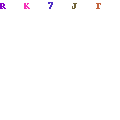 |
| John Galliano in One of His Costumes |
As I left a Paris cafe the other night, instead of the usual “Bonsoir, Madame,” the waiter called after me, “Happy Fashion Week!” as if we were all celebrating a national holiday.
Maybe we were. Fashion is more than business in France: it’s a mythology, a secular religion, a source of national pride, especially during Fashion Week, when the country recalls its history as the birthplace of haute couture.
In recent days, though, in response to the anti-Semitic diatribe by Christian Dior’s creative director, John Galliano, the French have been recalling a far more ominous chapter in their history.
According to witnesses, a drunken Mr. Galliano exploded at a woman seated near him in a Paris bar. “Dirty Jewish face, you should be dead,” he is said to have told her. “Your boots are of the lowest quality, your thighs are of the lowest quality. You are so ugly I don’t want to see you. I am John Galliano!”
France is highly sensitive to such matters, and reprisals came quickly. Dior fired Mr. Galliano, who now faces charges of using a racial insult, a crime in France. But beyond the spectacle of one man’s abhorrent politics, the episode invites consideration of the curious relationship between French fashion and fascism.
During the Occupation, the Nazis and their French allies recognized the power and national prestige of the French fashion industry and sought to harness it. When the collaborationist Vichy government took over direction of the French lifestyle magazine Paris Soir, it announced in its pages a “summer of couture ... and shopping.” The Nazis were so enamored with fashion’s place in French culture that in their plans for postwar Europe, they stipulated that, unlike other industries, the fashion sector would remain in France.
Many in fashion were eager to play along. Lucien Lelong, a designer who supported Vichy and whose house stayed open during the war, saw couture as a political force: “Our role is to give France the face of serenity. The more elegant Frenchwomen are, the more our country will show the world that we are not afraid.”
French fashion publications advocated a deep connection between the cultural splendor of couture and Frenchwomen’s national, even genetic identity.
“Every woman in Paris is a living propaganda poster, the universal function of the Frenchwoman is to remain chic,” wrote one fashion journalist in the early 1940s. “Frenchwomen are the repositories of chic, because this inheritance is inscribed in their race,” wrote another. And as Vichy continued to toe the Nazi line about Aryan physical fitness, more French fashion magazines began focusing on exercise and diet for women.
Although not everyone in the world of French fashion fell in line with fascist ideas, it’s no coincidence that many did. After all, there are deep and unsettling parallels between the industry, particularly in Europe, and fascism’s antidemocratic aesthetic.
Both, for example, rely on a handful of oracular, charismatic leaders who issue proclamations to (select) crowds. Fascist leaders offered their followers the prospect of an enhanced, mythic identity — a dream of youth and beauty, the same attributes promised by high fashion.
While fashion has moved far beyond the worst of the Vichy years, the role of the stylized, quasi-mythical celebrity-designer remains in the form of figures like Mr. Galliano and Chanel’s Karl Lagerfeld; Mr. Galliano has been known to costume himself as a pirate or a Proustian dandy, while Mr. Lagerfeld sticks to a somewhat Goth interpretation of an 18th-century Prussian officer.
At the root of the whole system is the most elusive myth of all: the impossible promise that fashion can vanquish physical inadequacy and aging, conferring the beauty and youth we see on the runways and on every page of Vogue — a cult of physical perfection very much at home in the history of fascism.
And although we insist on the racial diversity of fashion’s current standards of beauty, the fascists’ body ideal has persisted and expanded far beyond Europe. The hallmarks of the Nazi aesthetic — blue eyes, blond hair, athletic fitness and sharp-angled features — are the very elements that define what we call the all-American look, still visible in the mythic advertising landscapes of designers like (the decidedly non-Aryan) Ralph Lauren and Calvin Klein.
Which brings us back to Mr. Galliano in the Paris bar. His was not a generic anti-Semitic tirade, but the self-conscious pronouncement of a world-class arbiter of taste (“I am John Galliano!”). Not only did he use ethnic slurs, he accused the woman of being unattractive and unfashionable, associating both with ethnicity, with being Jewish (which she happened not to be).
The link is clear: like a fascist demagogue of yore, he was declaring that she did not belong to the gilded group who wear the right boots, and from this Mr. Galliano slid effortlessly to a condemnation of her very flesh, and a wish for her death.
Last week the French daily Le Monde declared that by firing Mr. Galliano, Dior had sounded the “death knell for the myth of the omnipotent designer.” That may be premature, given the myth’s deep roots. But the drunken ramblings of one man in a bar may have set off an important discussion about a less pretty undercurrent in a multibillion-dollar industry. Happy Fashion Week.
Rhonda Garelick, a professor of English and performing arts at the University of Nebraska-Lincoln, is working on a cultural biography of Coco Chanel.
No comments:
Post a Comment